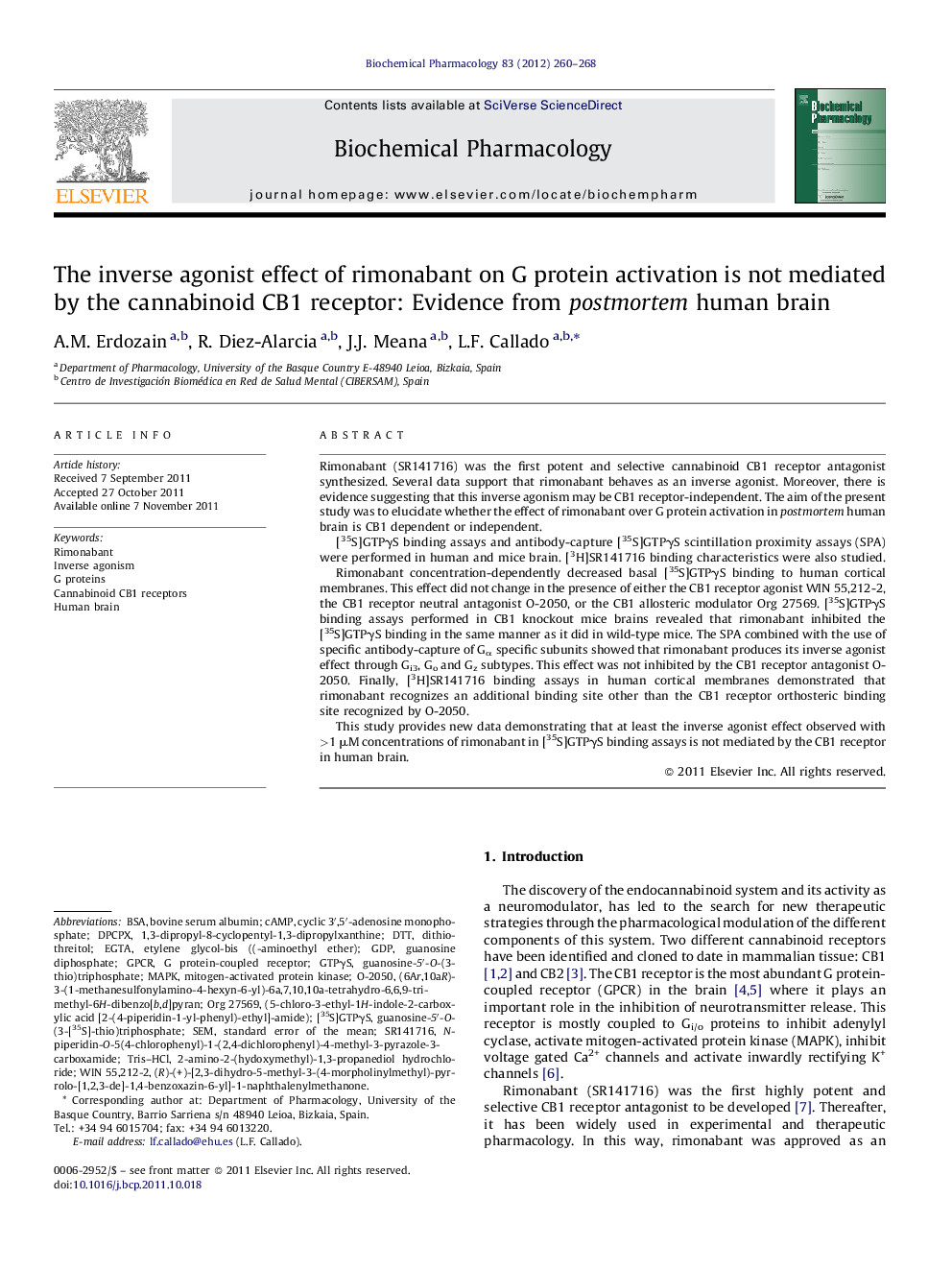| کد مقاله | کد نشریه | سال انتشار | مقاله انگلیسی | نسخه تمام متن |
|---|---|---|---|---|
| 2513693 | 1118429 | 2012 | 9 صفحه PDF | دانلود رایگان |

Rimonabant (SR141716) was the first potent and selective cannabinoid CB1 receptor antagonist synthesized. Several data support that rimonabant behaves as an inverse agonist. Moreover, there is evidence suggesting that this inverse agonism may be CB1 receptor-independent. The aim of the present study was to elucidate whether the effect of rimonabant over G protein activation in postmortem human brain is CB1 dependent or independent.[35S]GTPγS binding assays and antibody-capture [35S]GTPγS scintillation proximity assays (SPA) were performed in human and mice brain. [3H]SR141716 binding characteristics were also studied.Rimonabant concentration-dependently decreased basal [35S]GTPγS binding to human cortical membranes. This effect did not change in the presence of either the CB1 receptor agonist WIN 55,212-2, the CB1 receptor neutral antagonist O-2050, or the CB1 allosteric modulator Org 27569. [35S]GTPγS binding assays performed in CB1 knockout mice brains revealed that rimonabant inhibited the [35S]GTPγS binding in the same manner as it did in wild-type mice. The SPA combined with the use of specific antibody-capture of Gα specific subunits showed that rimonabant produces its inverse agonist effect through Gi3, Go and Gz subtypes. This effect was not inhibited by the CB1 receptor antagonist O-2050. Finally, [3H]SR141716 binding assays in human cortical membranes demonstrated that rimonabant recognizes an additional binding site other than the CB1 receptor orthosteric binding site recognized by O-2050.This study provides new data demonstrating that at least the inverse agonist effect observed with >1 μM concentrations of rimonabant in [35S]GTPγS binding assays is not mediated by the CB1 receptor in human brain.
Figure optionsDownload as PowerPoint slide
Journal: Biochemical Pharmacology - Volume 83, Issue 2, 15 January 2012, Pages 260–268